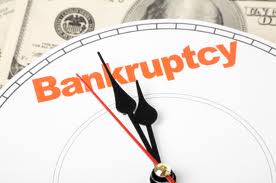 The automatic stay, which goes into effect upon the filing of a bankruptcy petition, prevents many types of debt collection activities. These include calls and letters from debt collectors, lawsuits, and garnishment. The automatic stay continues until the bankruptcy case is completed and the debtor receives a discharge which permanently shields the debtor from collection of the debts discharged in the bankruptcy.
The automatic stay, which goes into effect upon the filing of a bankruptcy petition, prevents many types of debt collection activities. These include calls and letters from debt collectors, lawsuits, and garnishment. The automatic stay continues until the bankruptcy case is completed and the debtor receives a discharge which permanently shields the debtor from collection of the debts discharged in the bankruptcy.
However, discharging a debt doesn’t remove a lien from property. For example, when someone buys a house, they may borrow money from a bank. This kind of loan is called a mortgage. The loan is usually secured by the house that the money was used to buy. If the homeowner doesn’t pay the mortgage then the mortgage company can foreclose on the house. The mechanism that attaches the debt to the home is called a lien. When a debtor files bankruptcy they may discharge a debt but the lien may exist. This means that the creditor may not be able to collect from the bankruptcy debtor directly, but they may be able to enforce their lien and collect from the sale of the property itself.
A lien is also created when a bank account is garnished. In Texas, the money in an account which is the subject of a writ of garnishment is encumbered by a lien. This means that although the creditor may not be able to access the money because of the automatic stay, the bank will not release the money to the debtor either.
Fortunately, the Bankruptcy Code allows debtors to remove liens in some instances. If the lien resulted from a judgment, then it can be removed from the bank account. Section 522 of the Bankruptcy Code specifically provides that a debtor can move the Bankruptcy Court for an order avoiding a judicial lien. Once the lien is removed the debtor will be able to access the funds in the bank account assuming they are not property of the bankruptcy estate.